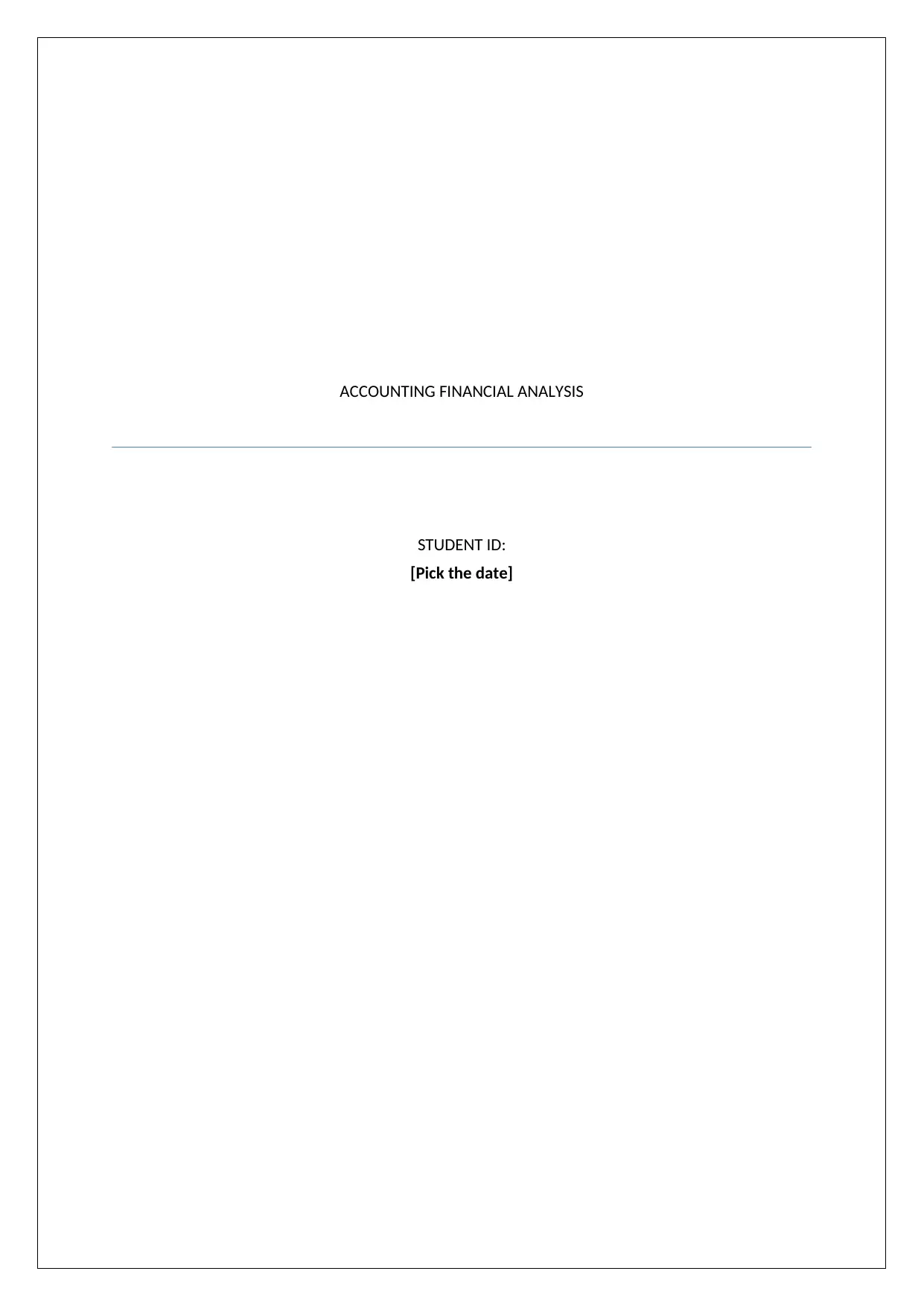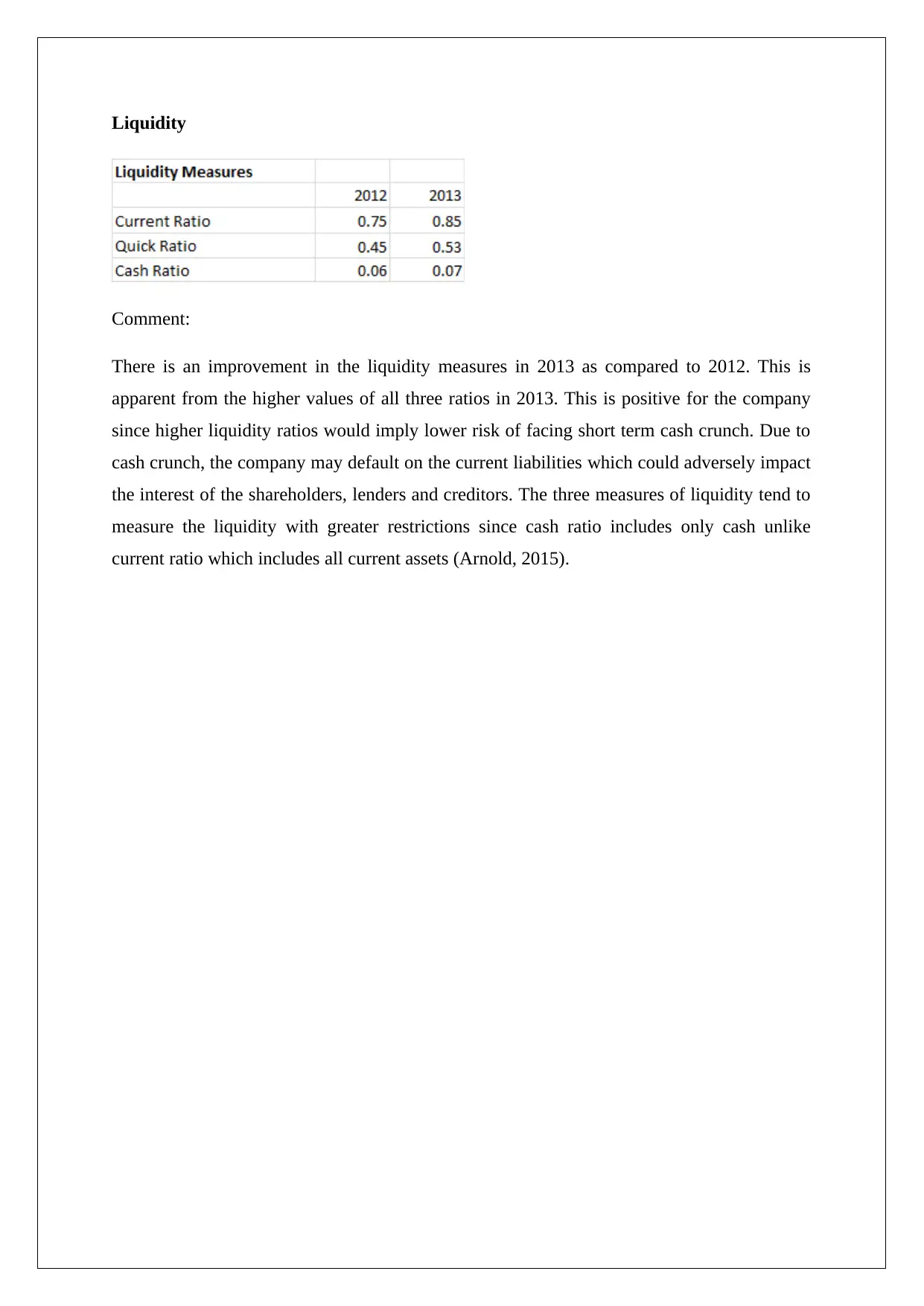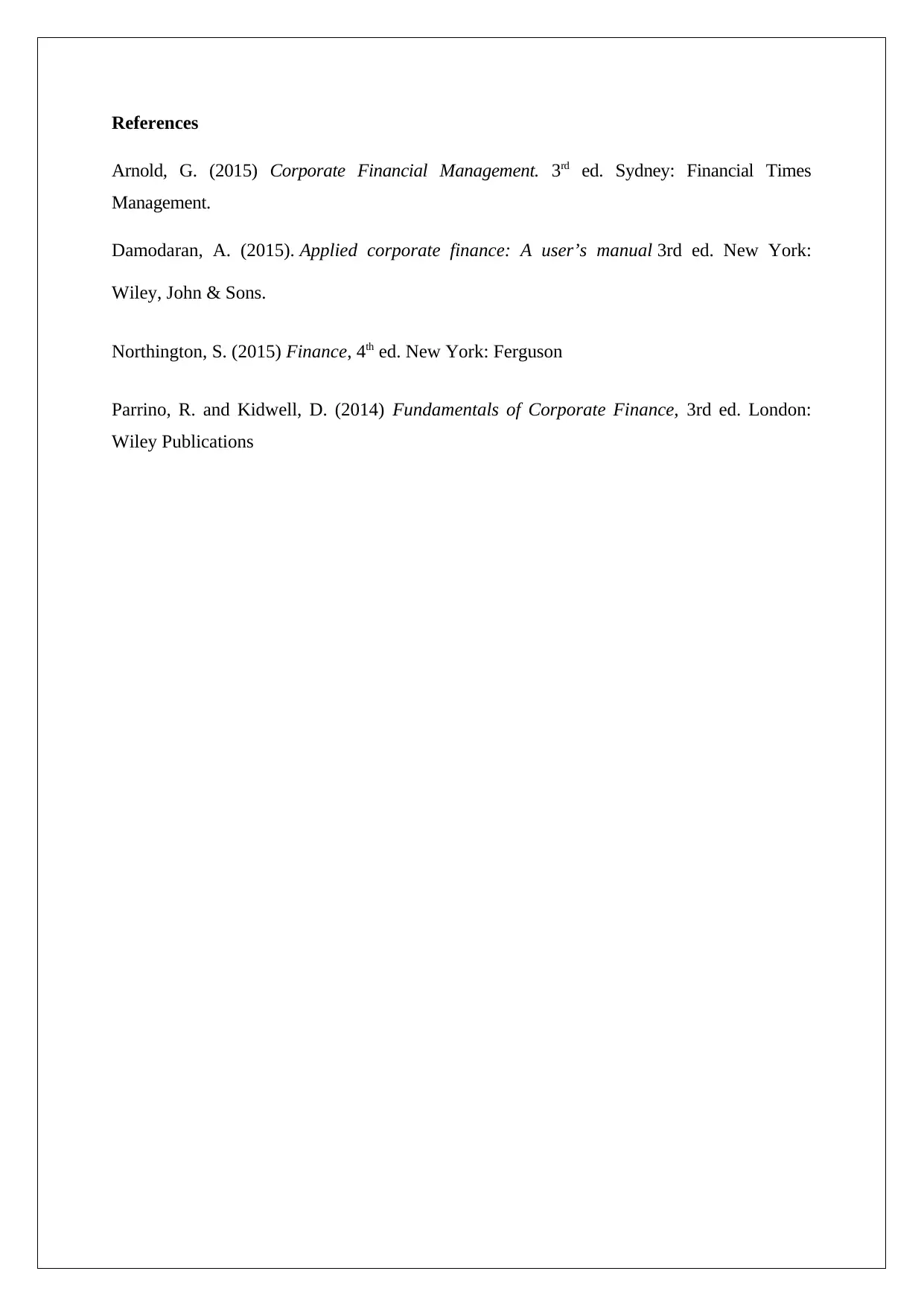Financial Analysis Report: Company Performance Evaluation
VerifiedAdded on 2023/06/06
|5
|667
|318
Report
AI Summary
This report presents a financial analysis of a company, evaluating its performance across several key areas. The analysis begins with an assessment of profitability, comparing ratios from 2012 to 2013 to highlight improvements in gross and net margins, and discussing the impact on earnings per share and share price. The report then examines leverage, noting a reduction in the company's debt-to-equity and debt-to-assets ratios, which indicates decreased financial risk and improved interest coverage. Efficiency is analyzed, revealing a decline in asset turnover, receivable turnover, and inventory turnover, which suggests lower efficiency in asset utilization and longer collection and conversion periods. Finally, the report assesses liquidity, indicating an improvement in liquidity measures in 2013 compared to 2012, reducing the risk of short-term cash crunches. The analysis references key financial management texts and provides a comprehensive overview of the company's financial health and performance trends.
1 out of 5












![[object Object]](/_next/static/media/star-bottom.7253800d.svg)